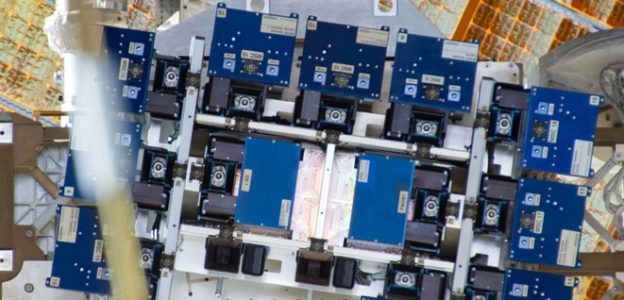
The National Space Administration (NASA) has found that perovskite solar cells may perform better in space than on Earth, with lower degradation rates.
NASA is evaluating the performance and durability of perovskite solar energy in outer space, and announced the results a few days ago. They spent 10 months testing the performance of perovskite cells on the International Space Station, evaluating the resistance of their absorbers to vacuum environments, extreme temperatures, radiation and light stressors, and they found that perovskite solar , or “deep black”.
NASA pointed out that the deep black represents that the perovskite film is in the most efficient state of absorbing light. If it turns yellow, it is the bad news that the crystalline material has decomposed into lead iodide and cannot be used to generate electricity.
The science team affixed the perovskite film to the outside of the space station, exposed it to space conditions from March 2020 to January 2021, and compared it with reference equipment on Earth after returning to a laboratory on Earth . The research team said that after returning to Earth and basking in the sun on the ground, the sunlight absorption characteristics of the space-traveled perovskite cells were restored, while the performance of the reference object was even worse when exposed to the same conditions.
Researcher Lyndsey McMillon-Brown said the perovskite film remained dark black after 10 months on the International Space Station, proving that innovative solar cell materials are suitable for future space missions, but it is not yet known why the film behaves this way. kind of super power.
So looking ahead, the NASA team also wants to find out what factors in the space environment change the perovskite. After all, McMillon-Brown said, perovskite solar films not only “survive,” but are in some ways stronger, with the opportunity to fulfill tasks that current solar technologies cannot achieve.
However, this experiment also proves that earlier research, that is, the lack of water and oxygen outside the Earth’s atmosphere is beneficial to perovskite batteries. These batteries may be more suitable for use in space environments and do not require major changes. The team said that the next step in the research will be to try to make perovskite cells operate in space for a long time.
(First image source: NASA)
Follow TechNews via Google News here



